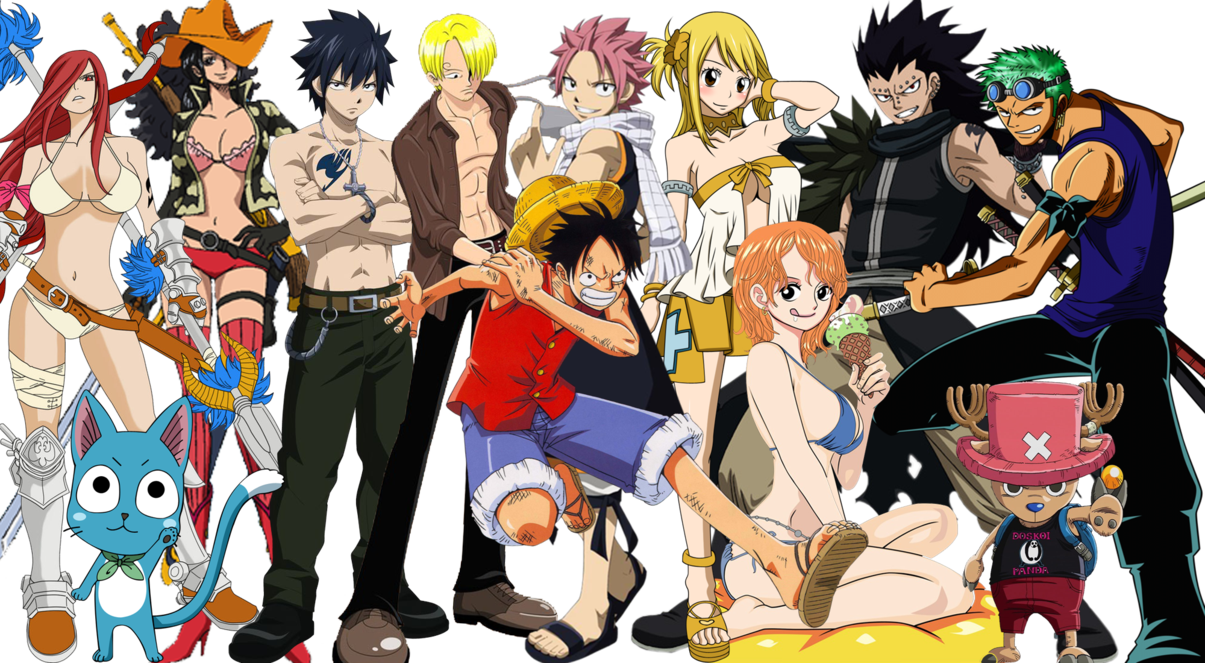ANIME
Anime are Japaneseanimated productions featuring hand-drawn or computer animation. The word is the abbreviated pronunciation of "animation" in Japanese, where this term references all animation. In other languages, the term is defined as animation from Japan or as a Japanese-disseminated animation often characterized by colorful graphics, vibrant characters and fantastic themes. Arguably, the stylization approach to the meaning may open up the possibility of anime produced in countries other than Japan.For simplicity, many Westerners strictly view anime as an animation product from Japan.
The earliest commercial Japanese animation dates to 1917, and production of anime works in Japan has since continued to increase steadily. The characteristic anime art style emerged in the 1960s with the works of Osamu Tezuka and spread internationally in the late twentieth century, developing a large domestic and international audience. Anime is distributed theatrically, by television broadcasts, directly to home media, and over the internet and is classified into numerous genres targeting diverse broad and niche audiences.
Anime is a diverse art form with distinctive production methods and techniques that have been adapted over time in response to emergent technologies. The production of anime focuses less on the animation of movement and more on the realism of settings as well as the use of camera effects, including panning, zooming and angle shots. Diverse art styles are used and character proportions and features can be quite varied, including characteristically large emotive or realistically sized eyes.
The anime industry consists of over 430 production studios including major names like Studio Ghibli Gainaxand Toei Animation. Despite having a fraction of the domestic film market, anime achieves a majority of DVD sales and has been an international success after the rise of televised English dubs. This rise in international popularly has resulted in non-Japanese productions using the anime art style, but these works have been defined as anime-influenced animation by both fans and the industry.
Anime arose in the early 20th century, when Japanese filmmakers experimented with the animation techniques also pioneered in France, Germany, the United States and Russia.A claim for the earliest Japanese animation is Katsudō Shashin, an undated and private work by an unknown creator.In 1917, the first professional and publicly displayed works began to appear. Animators such as Ōten Shimokawa and Seitarou Kitayama produced numerous works, with the oldest surviving film being Kouchi's Namakura Gatana, a two-minute clip of a samurai trying to test a new sword on his target only to suffer defeat.The 1923 Great Kantō earthquake resulted in widespread destruction to Japan's infrastructure and the destruction of Shimokawa's warehouse, destroying most of these early works.
By the 1930s animation was well established in Japan as an alternative format to the live-action industry. It suffered competition from foreign producers and many animators, such as Noburō Ōfuji and Yasuji Murata, who still worked in cheaper cutout animation rather than cel animation.Other creators, such as Kenzō Masaoka and Mitsuyo Seo, nonetheless made great strides in animation technique; they benefited from the patronage of the government, which employed animators to produce educational shorts and propaganda.The first talkie anime was Chikara to Onna no Yo no Naka, produced by Masaoka in 1933.By 1940, numerous anime artists' organizations had risen, including the Shin Mangaha Shudan and Shin Nippon Mangaka.The first feature-length animated film was Momotaro's Divine Sea Warriors directed by Seo in 1944 with sponsorship by the Imperial Japanese Navy.
A frame from Momotaro's Divine Sea Warriors (1944), the first feature-length anime film
The success of The Walt Disney Company's 1937 feature film Snow White and the Seven Dwarfs profoundly influenced many Japanese animators.In the 1960s, manga artist and animator Osamu Tezuka adapted and simplified many Disney animation techniques to reduce costs and to limit the number of frames in productions. He intended this as a temporary measure to allow him to produce material on a tight schedule with inexperienced animation staff.Three Tales, aired in 1960, was the first anime shown on television. The first anime television series was Otogi Manga Calendar, aired from 1961 to 1964.The 1970s saw a surge of growth in the popularity of manga, Japanese comic books and graphic novels, many of which were later animated. The work of Osamu Tezuka drew particular attention: he has been called a "legend" and the "god of manga".His work – and that of other pioneers in the field – inspired characteristics and genres that remain fundamental elements of anime today. The giant robot genre (known as "mecha" outside Japan), for instance, took shape under Tezuka, developed into the Super Robot genre under Go Nagai and others, and was revolutionized at the end of the decade by Yoshiyuki Tomino who developed the Real Robot genre. Robot anime like the Gundam and The Super Dimension Fortress Macross series became instant classics in the 1980s, and the robot genre of anime is still one of the most common in Japan and worldwide today. In the 1980s, anime became more accepted in the mainstream in Japan (although less than manga), and experienced a boom in production. Following a few successful adaptations of anime in overseas markets in the 1980s, anime gained increased acceptance in those markets in the 1990s and even more at the turn of the 21st century. In 2002, Spirited Away, a Studio Ghibli production directed by Hayao Miyazaki won the Golden Bear at the Berlin International Film Festival and in 2003 at the 75th Academy Awards it won the Academy Award for Best Animated Feature.
